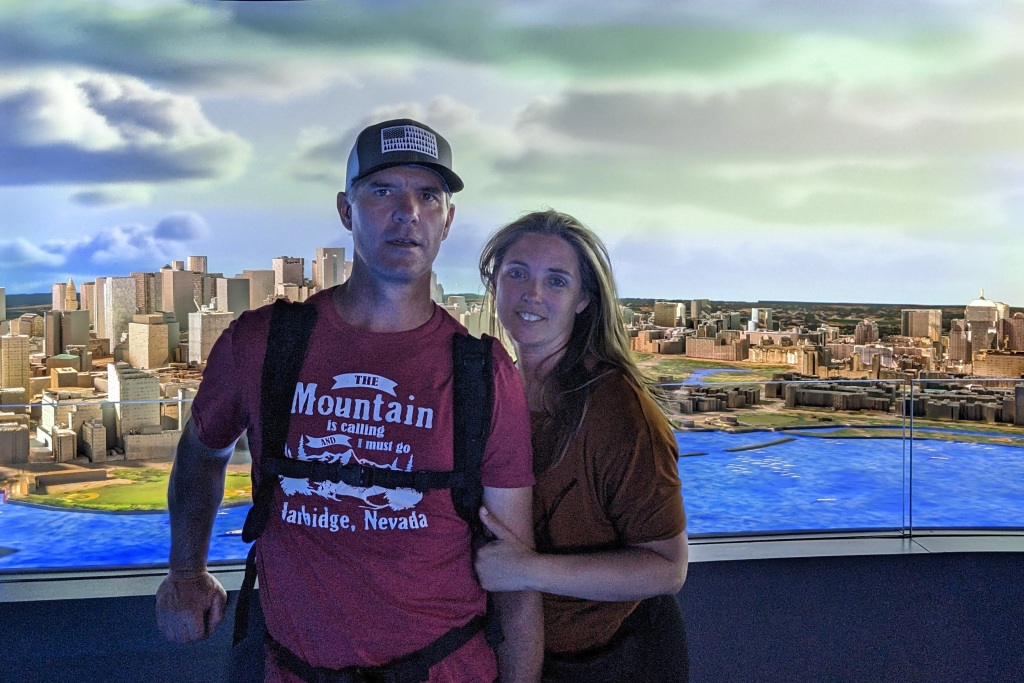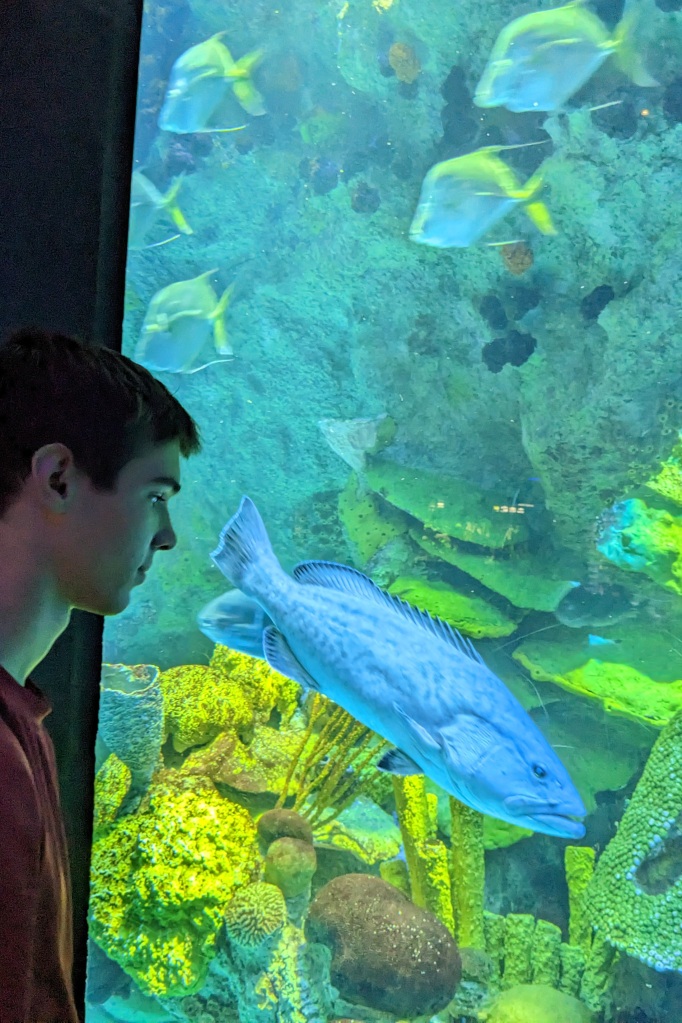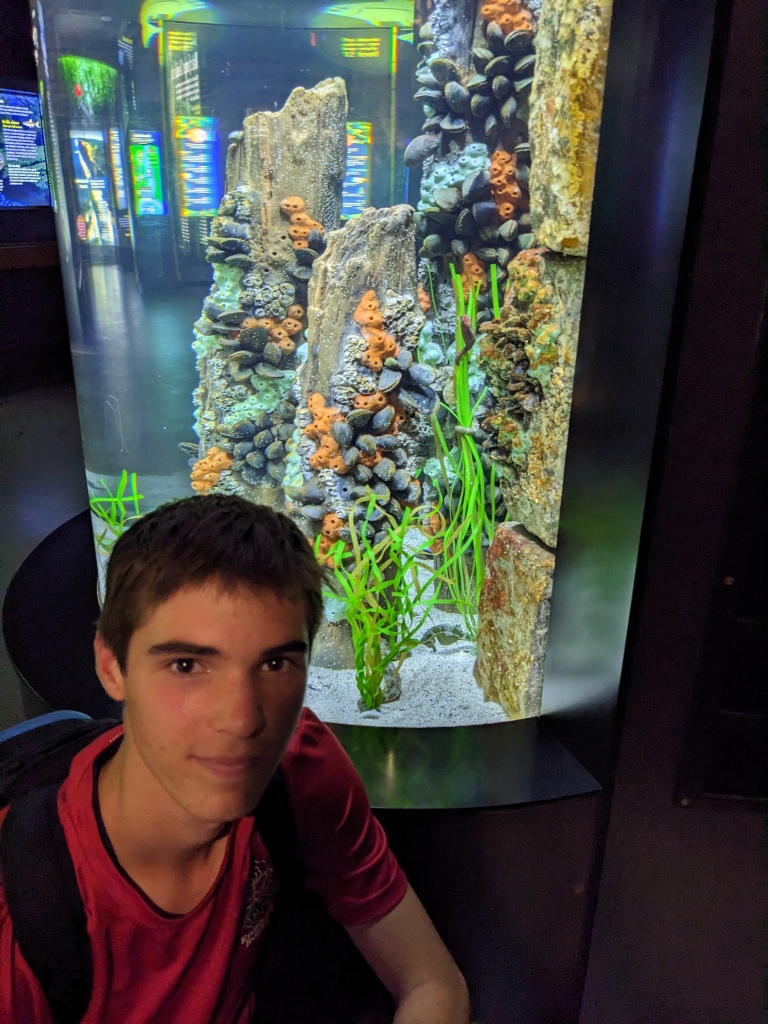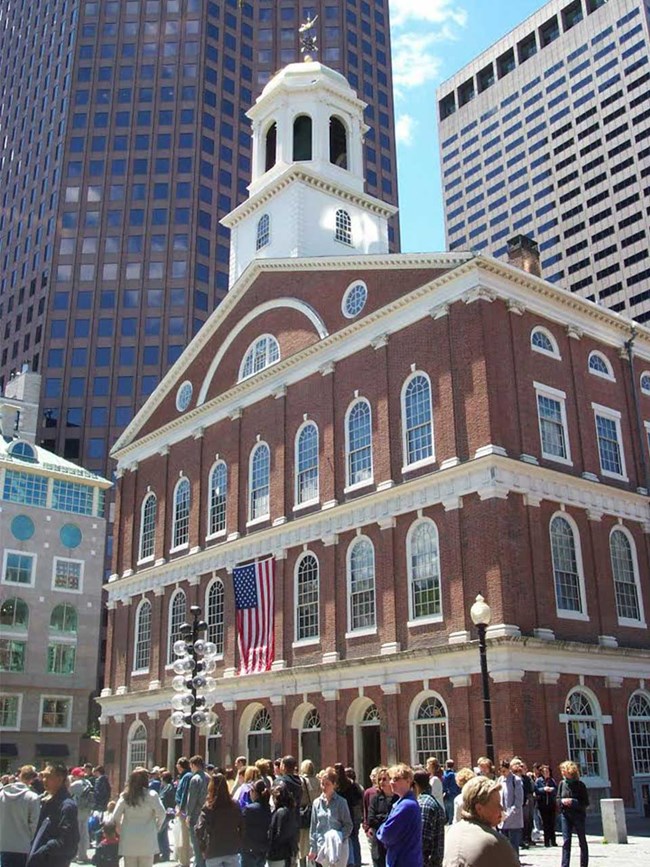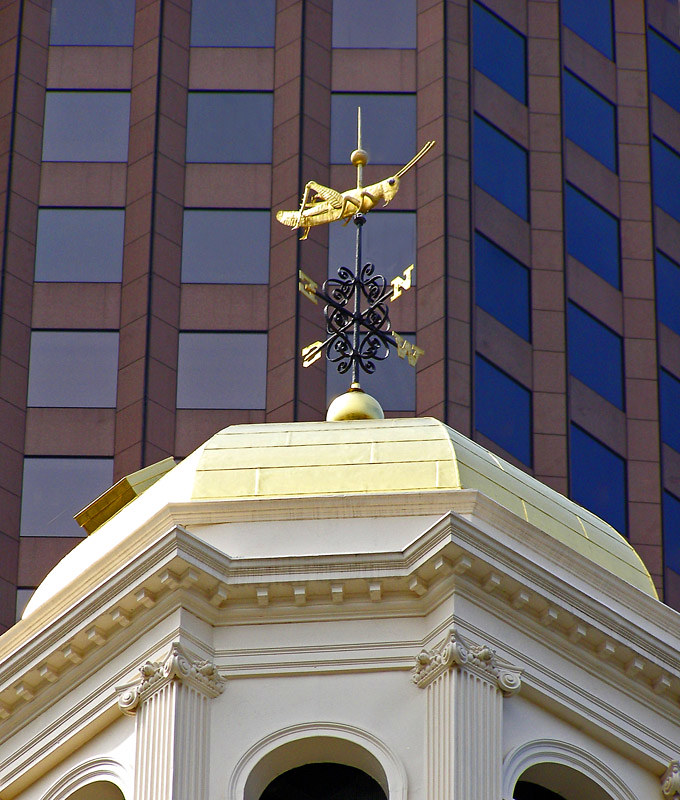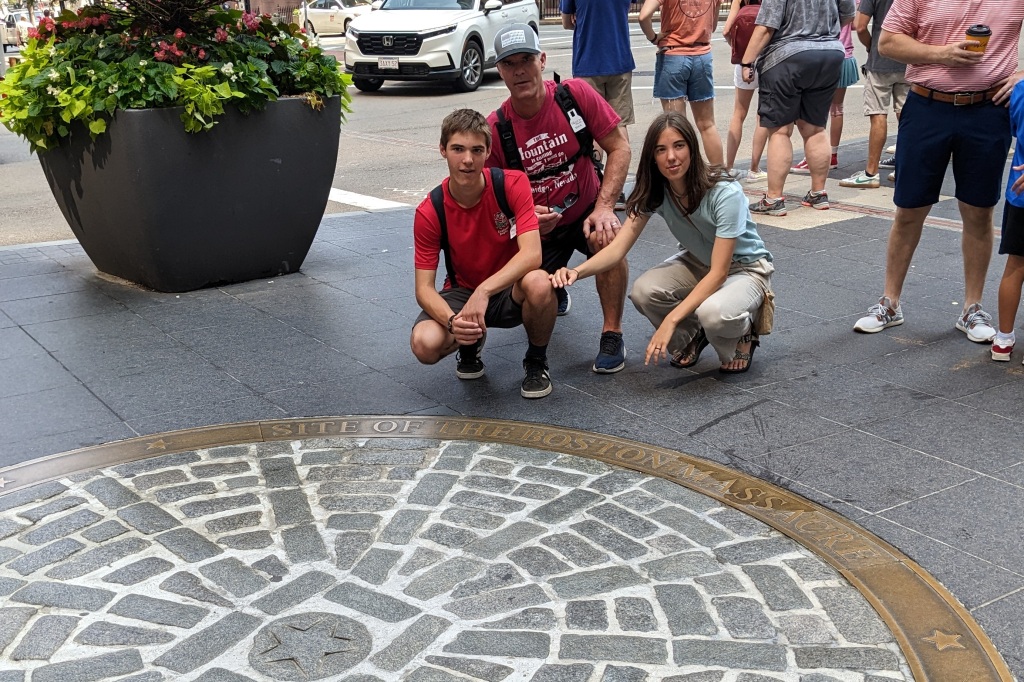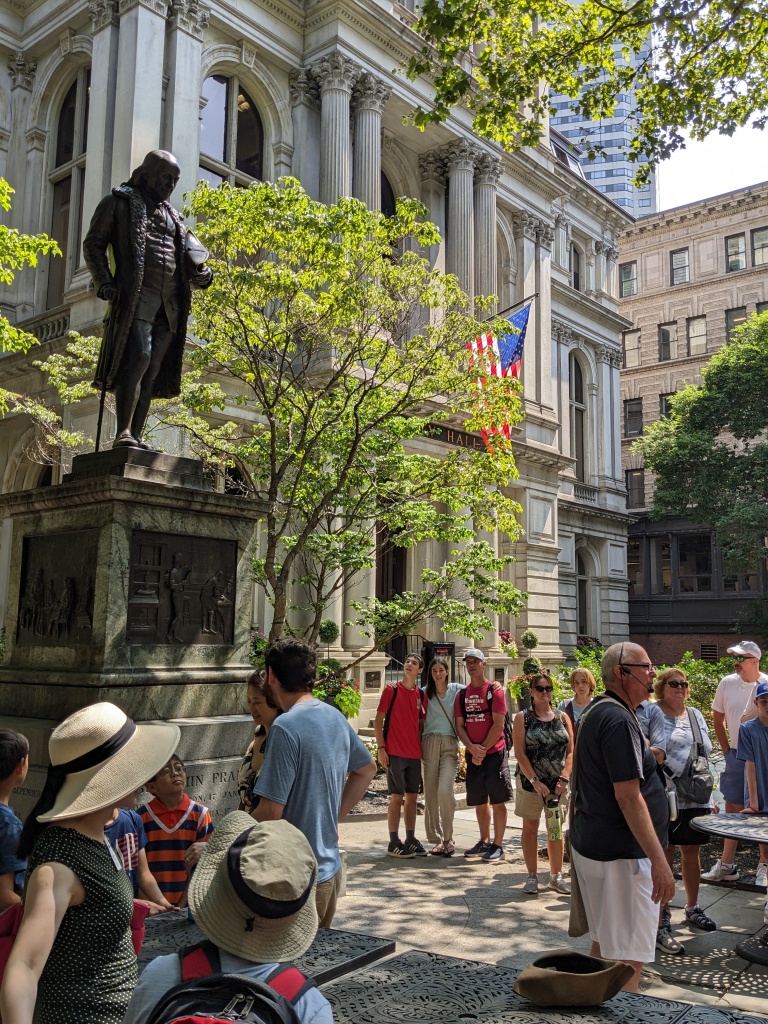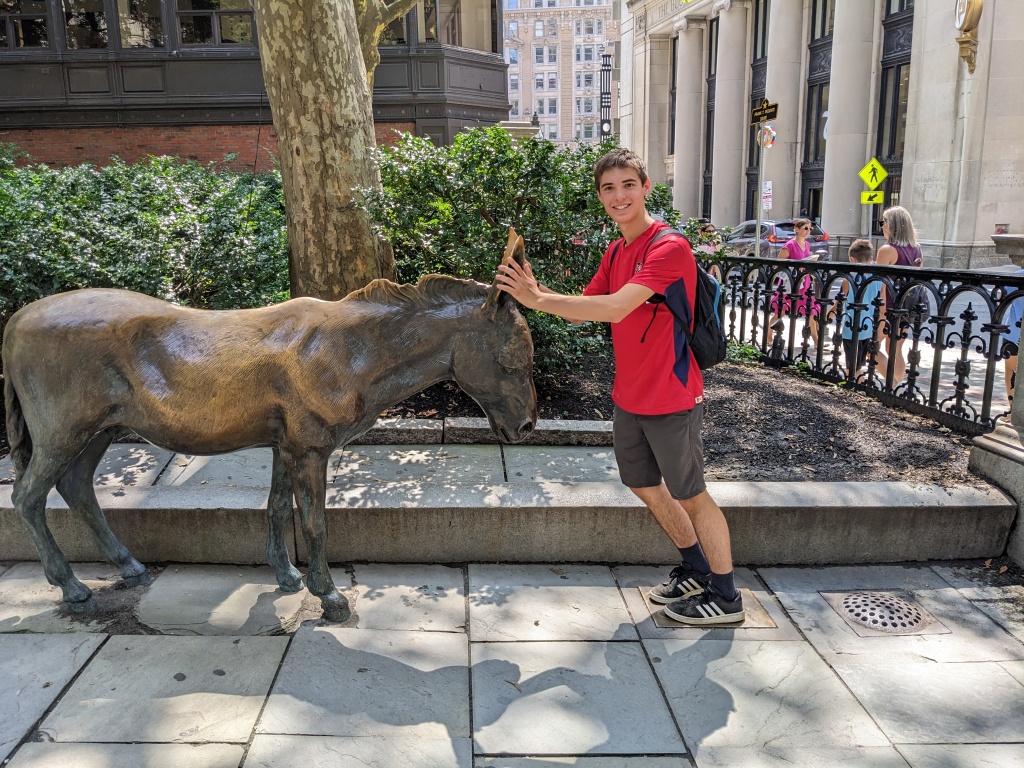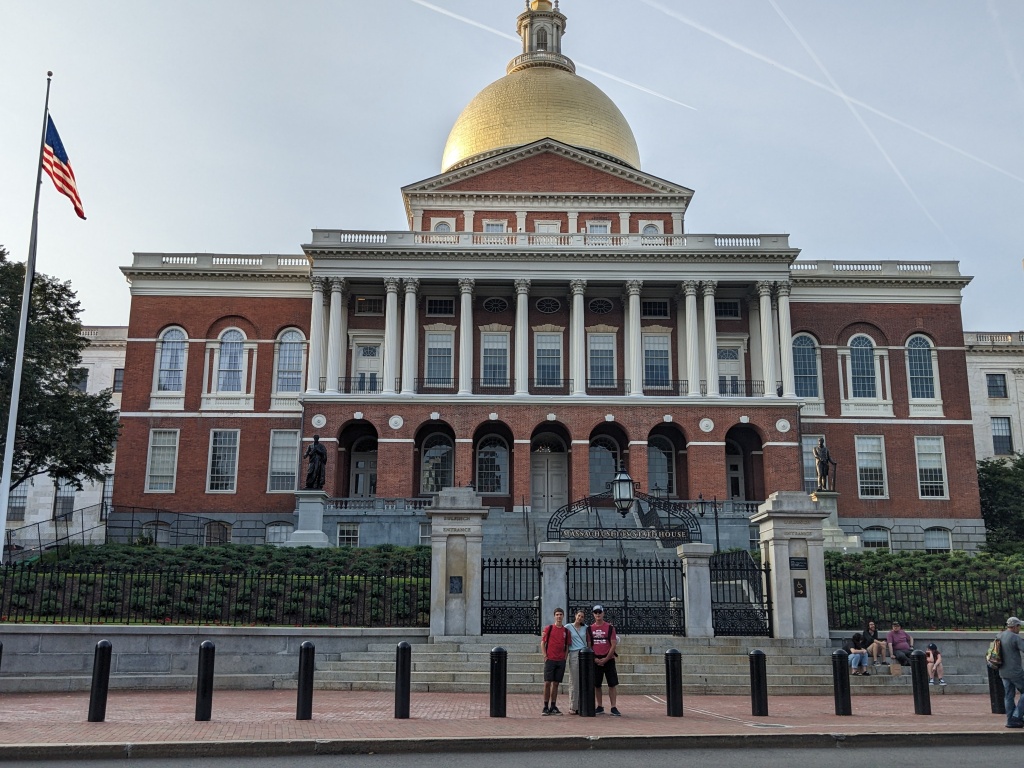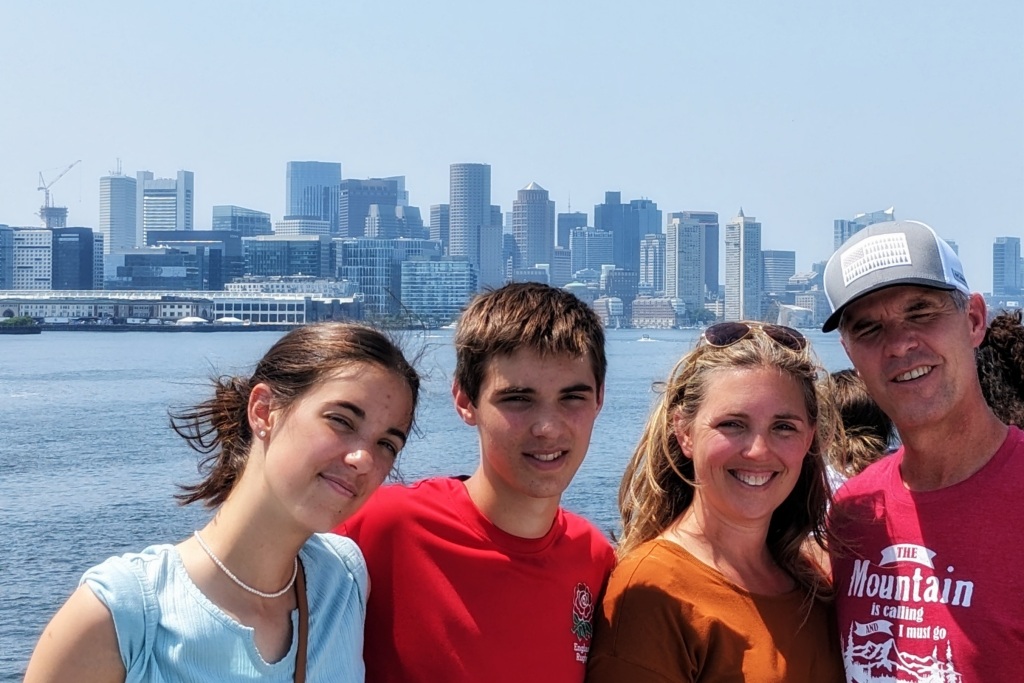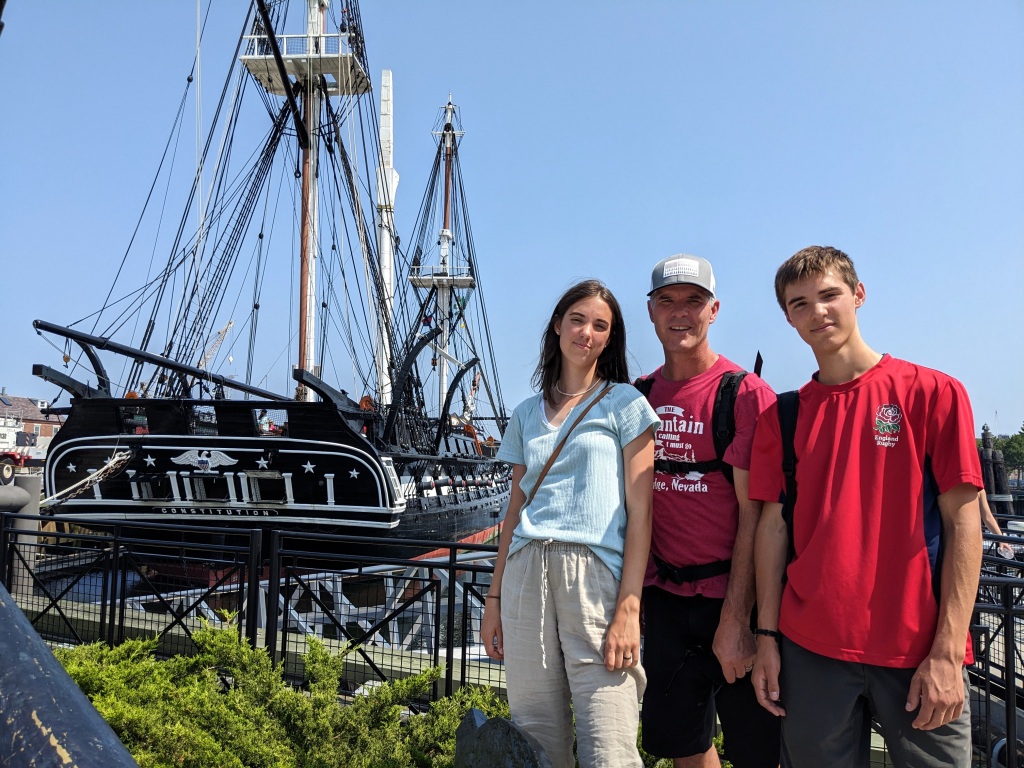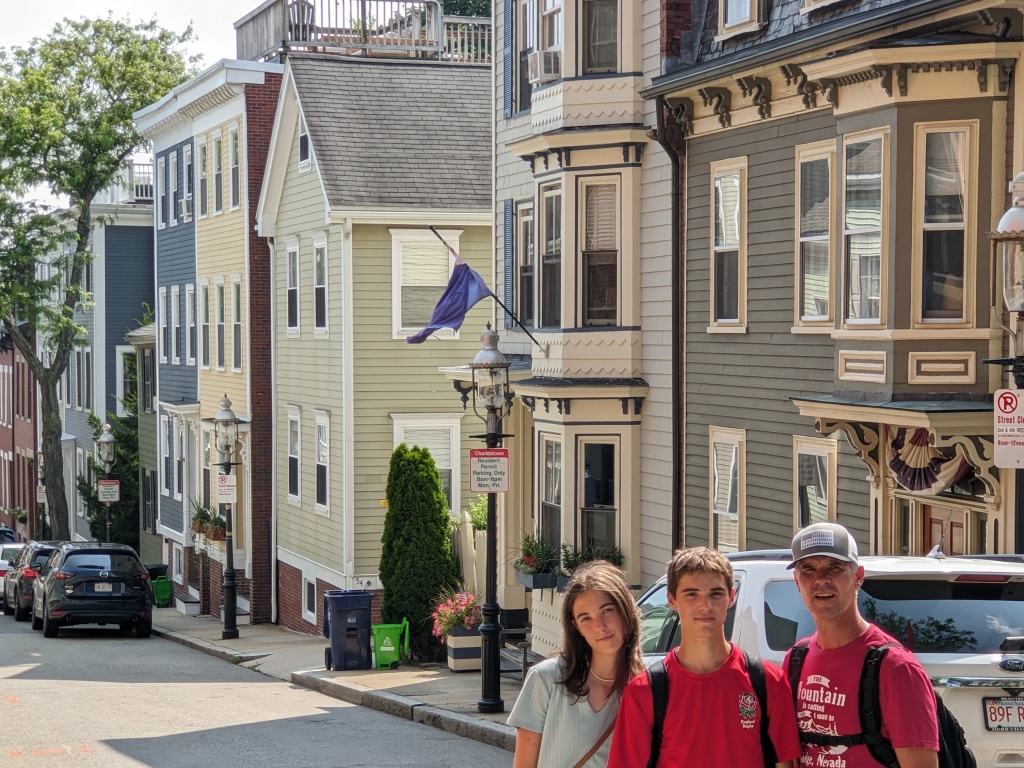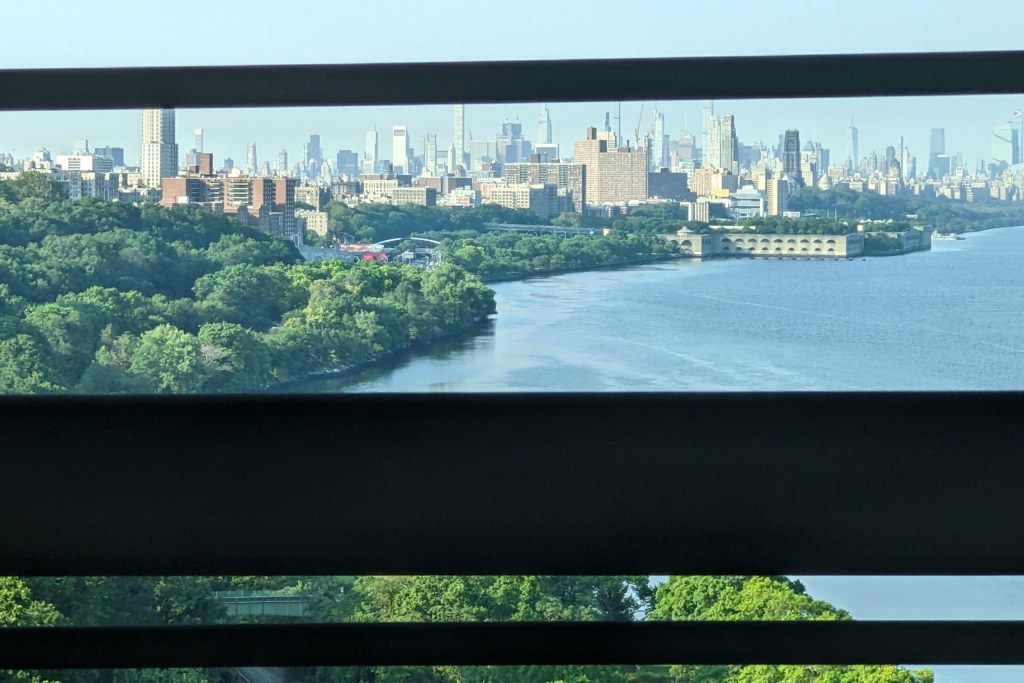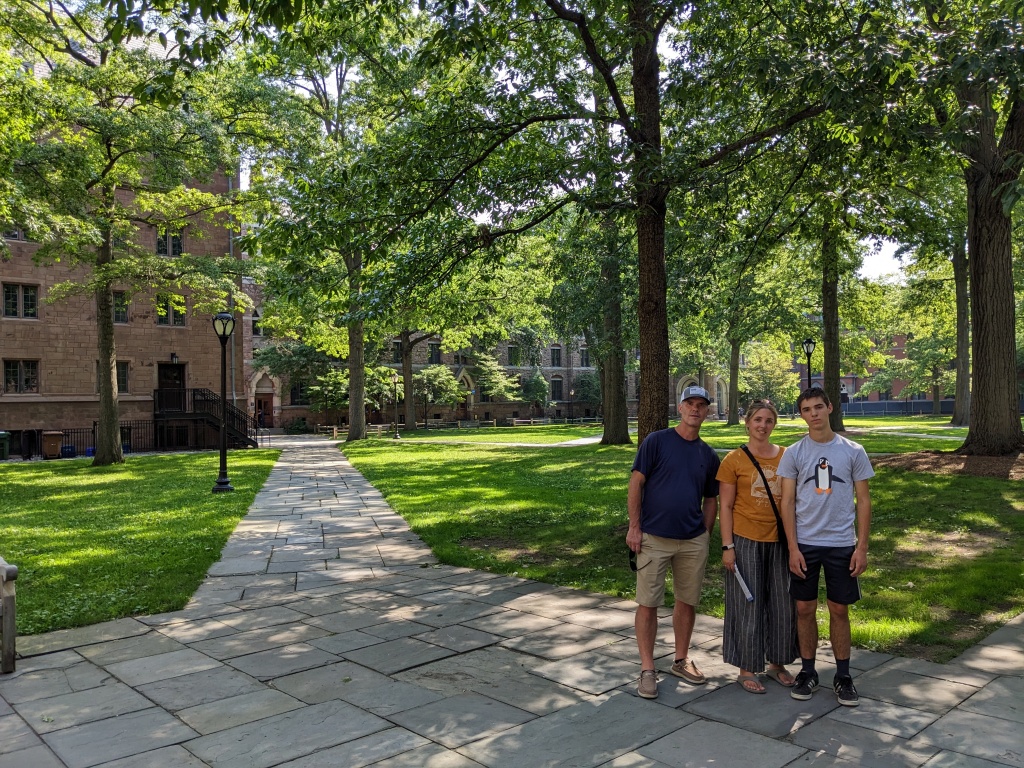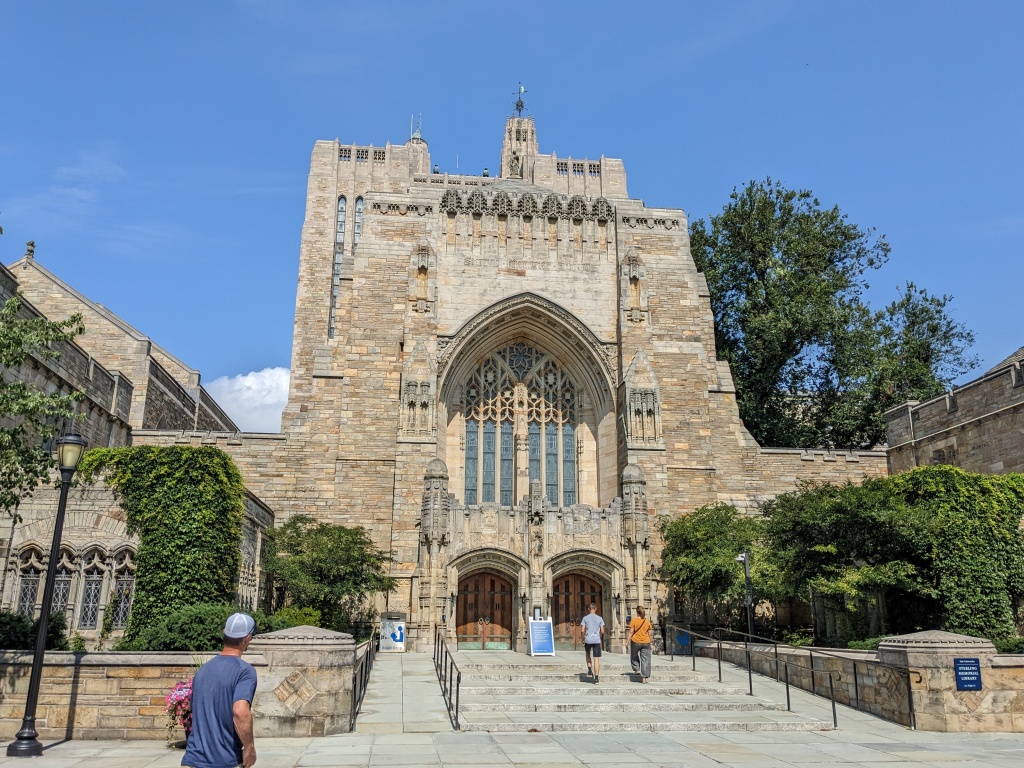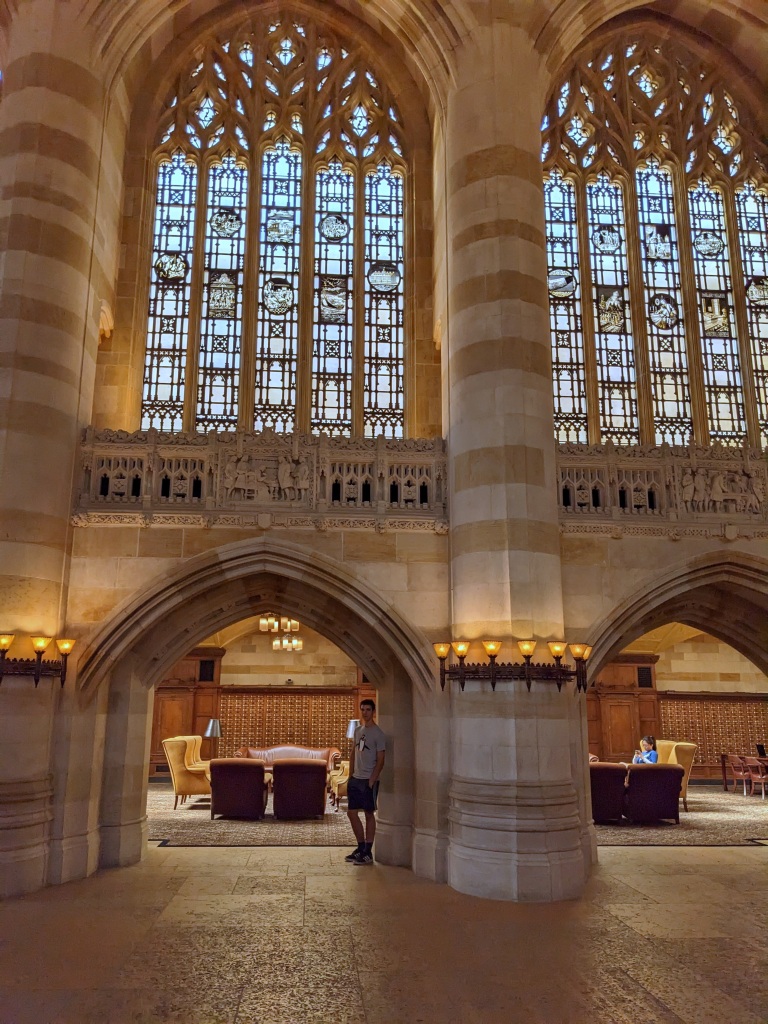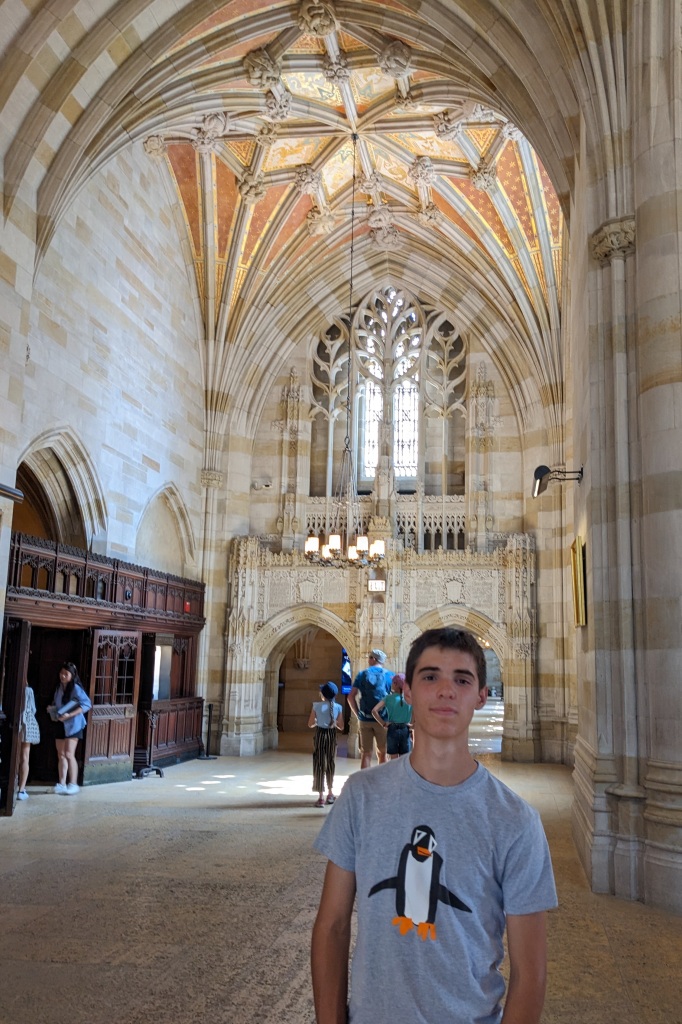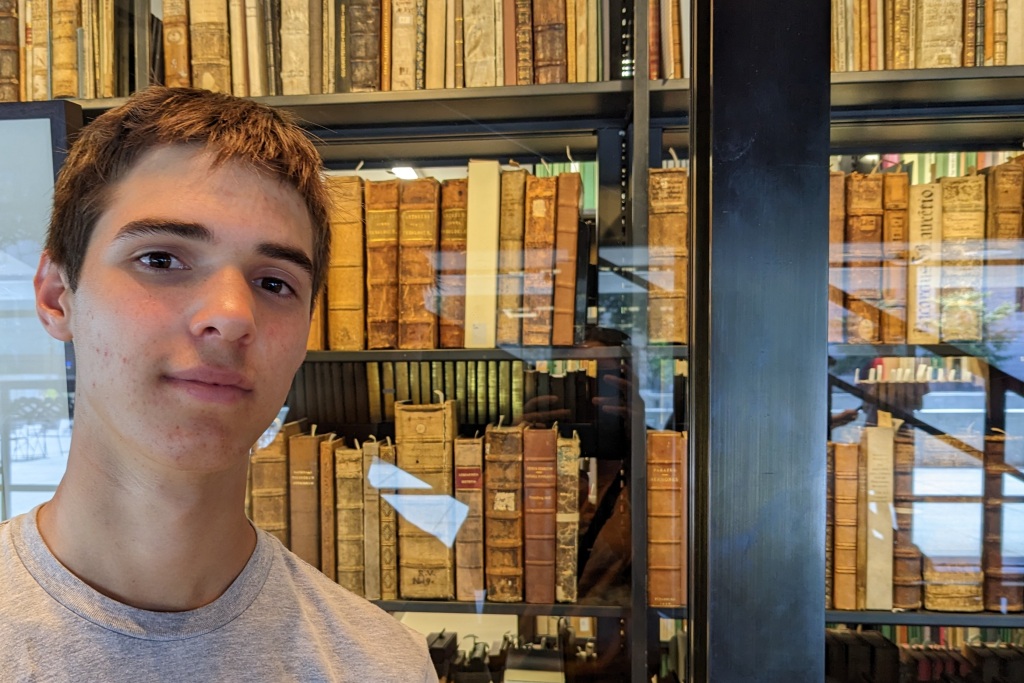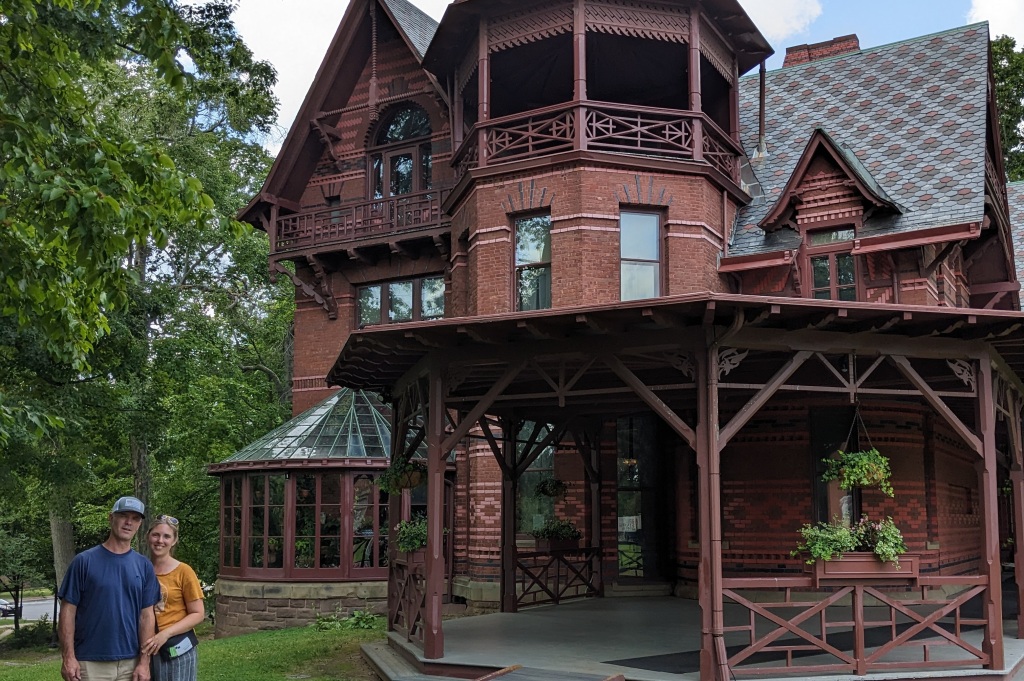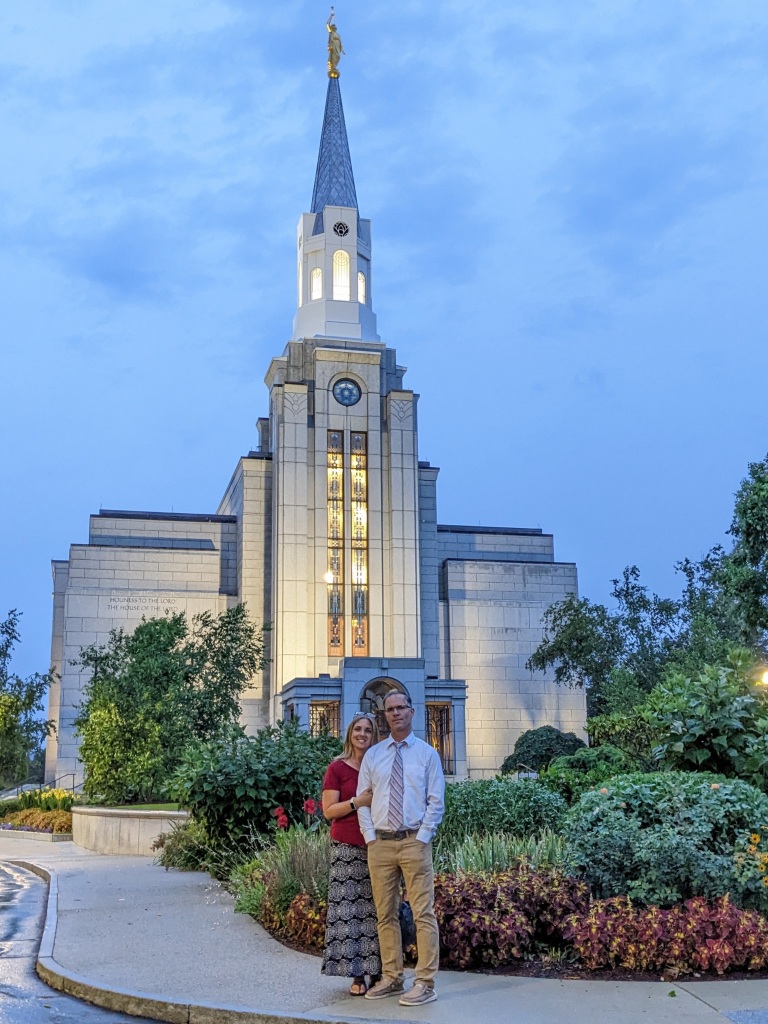Old North Church
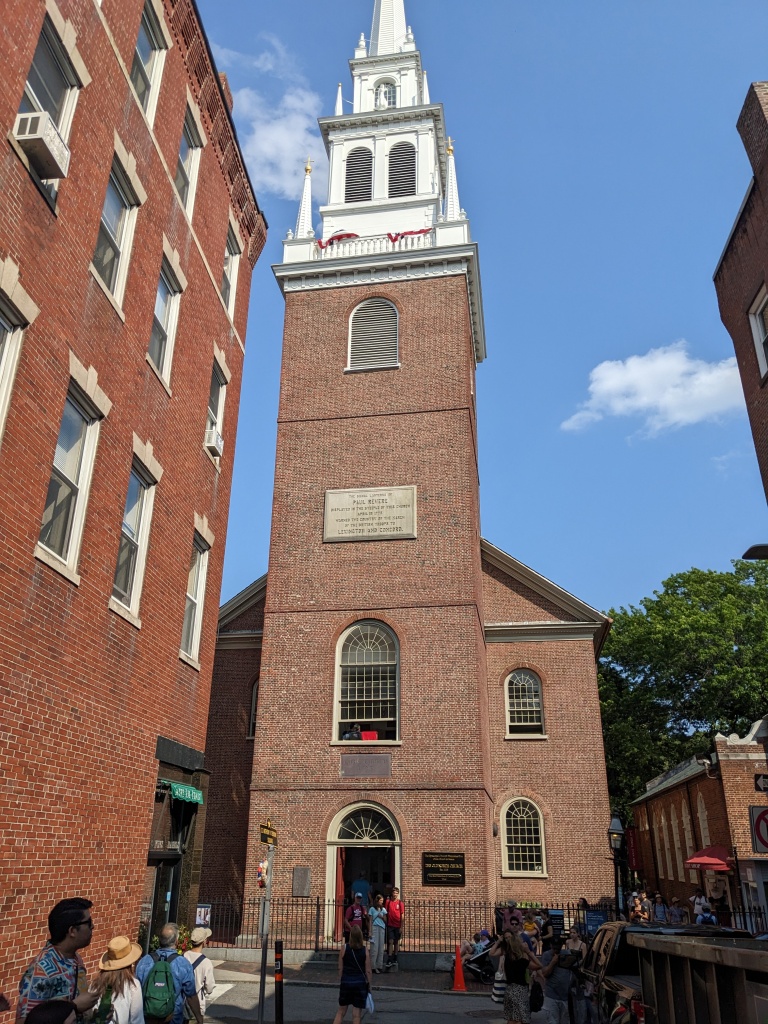
Old North Church is famous for its role in Paul Revere’s midnight ride on April 18, 1775. On that night, the church’s sexton, hung two lanterns in the church’s steeple, which alerted Revere and the other riders to British troops’ movements prior to the Battles of Lexington and Concord, the first battles of the American Revolutionary War. There are tours to go inside, but our day was full, so we just stopped to take a photo.
Paul Revere’s Home
FUN FACTS ABOUT PAUL REVERE: For someone that is only known for his famous ride, his name came up a lot on our tours. Paul Revere’s last name was really Rivoire (a French name), but his father wanted him to fit in with English immigrants, so his name was changed to Revere. Paul was a Copper Smith and the town dentist.

After Revere was born, he apprenticed under his father and learned how to craft things from gold and silver. Some items found of his include a chain for a pet squirrel, an ostrich egg snuffbox, and sword hilts. You can tell an item is made by Revere by his maker’s mark—either his last name in a rectangle, or his initials in cursive.
As a dentist, he learned how to create false teeth out of ivory and insert them using wire. Revere became so confident in his abilities that in 1768, he placed an ad declaring he “can fix [teeth] as well as any surgeon dentist who ever came from London, he fixes them in such a manner that they are not only an ornament but of real use in speaking and eating.”
After Dr. Joseph Warren was killed at the Battle of Bunker Hill in 1775, he was buried like others in an unmarked grave. Ten months later, the bodies were exhumed and examined. Revere was Warren’s dentist, and recognized him by his teeth: Revere had given Warren a false tooth fastened with wire. This was the first body identification done by teeth in recorded history.
Paul Revere and his fellow patriots never shouted, “The British are coming!” That wouldn’t have made sense, since most colonists were British. The actual warning was “the Regulars are coming out.” This misconception is a result of Longfellow’s creative license—he found the real sentence to be too wordy for his poem.
We toured his home. It’s small and simple. It was built in 1680 and is the only remaining example of 17th century architecture in downtown Boston. It’s the oldest standing building in Boston. This was the first American home that could be toured. The area is also the oldest residential square in the US, with other older homes near it from the same time. It had been lived in before Paul Revere lived there.
Old State House
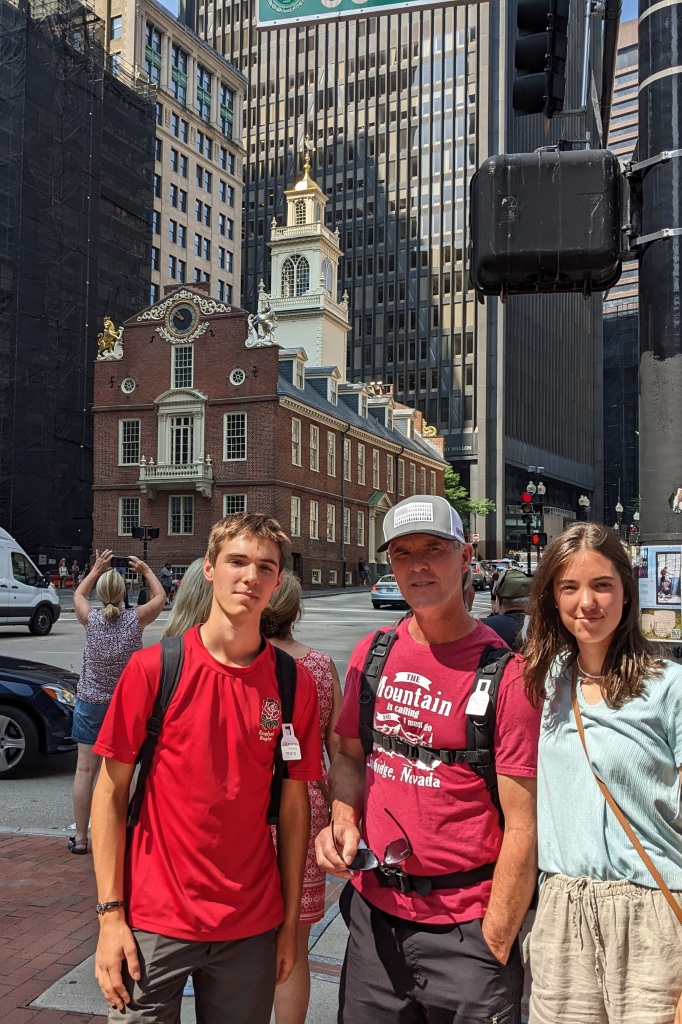
Built in 1713, the “Town House” acted as a merchants’ exchange on the first floor. The second floor served as the seat of colonial and later state government throughout the 1700s. John Adams, his cousin Samuel and merchant John Hancock, served as representatives in the Massachusetts provincial legislature here. And of course as mentioned earlier, in front of this building was the location of the Boston Massacre.
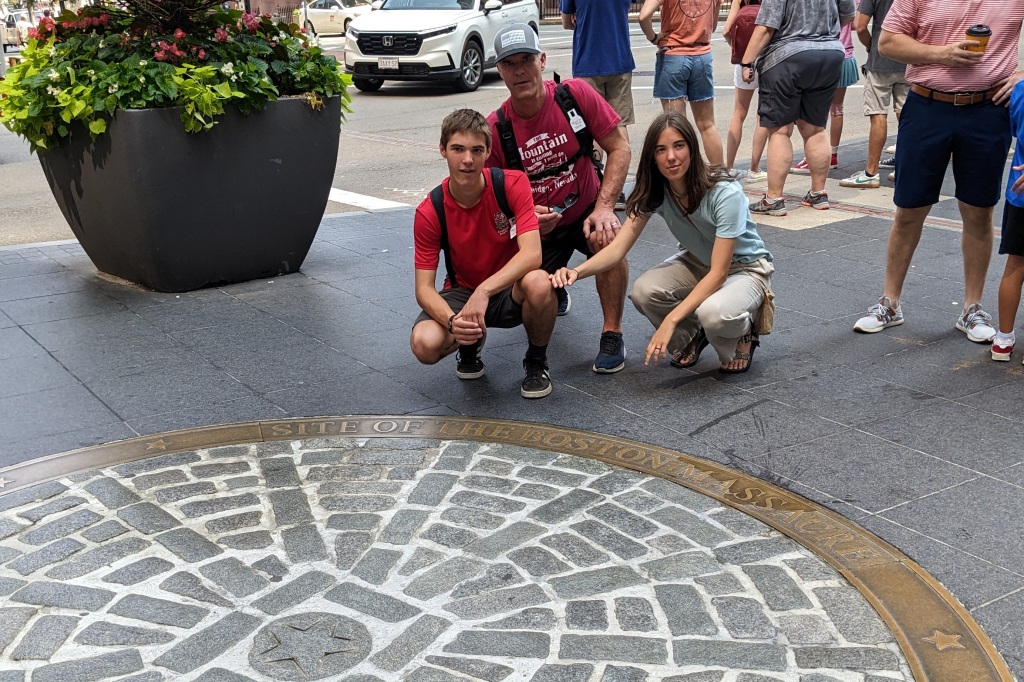
Old South Meeting House
Old South Meeting House was the largest building in colonial Boston and the stage for some of the most dramatic events leading up to the American Revolution. Old South became the center for massive public protest meetings against British actions. It was the series of meetings that culminated on December 16, 1773 as one of this country’s most significant buildings. On that day, over 5,000 men crowded into the meeting house to debate the controversial tea tax. When the final attempt at compromise failed, Samuel Adams gave the signal that started the Boston Tea Party. The Sons of Liberty led the way to Griffin’s Wharf, where they dumped 342 chests of tea into the harbor.
Union Oyster House
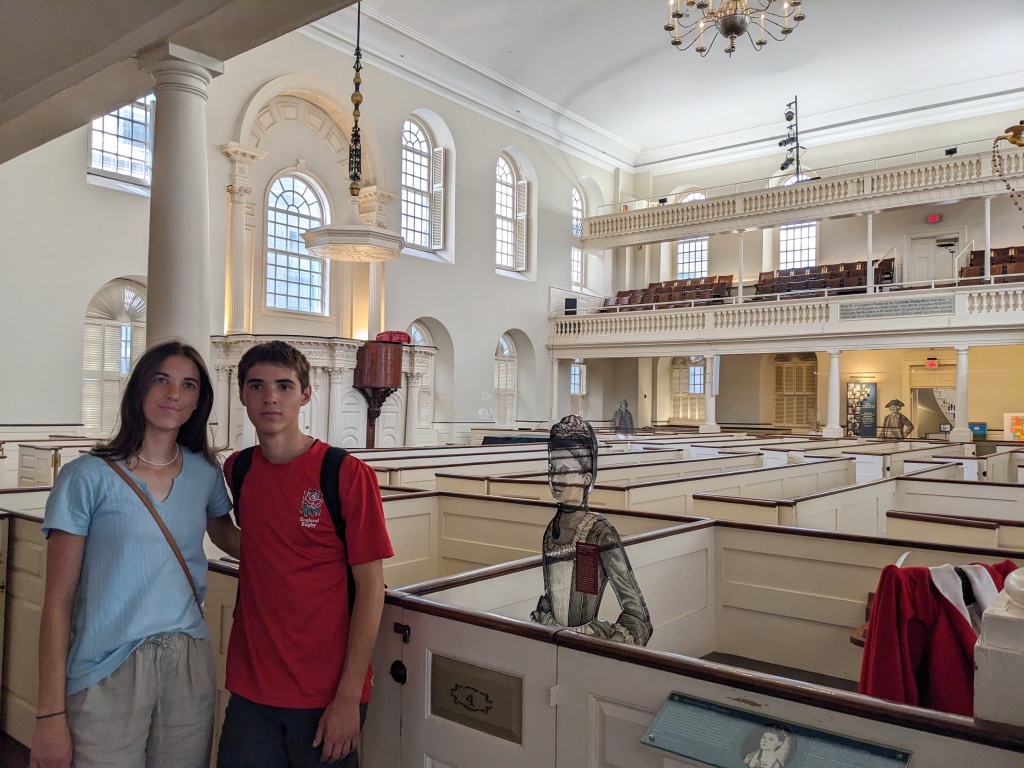

After a ton of walking and touristing all day, we went to the Union Oyster House, America’s oldest restaurant. A building dating back to Pre-Revolutionary days, started serving food in 1826 and has continued ever since.
In 1742—before it became a seafood house, the building housed importer Hopestill Capen’s fancy dress goods business, known as “At the Sign of the Cornfields.” At this time, the Boston waterfront came up to the back door of the dry goods establishment, making it convenient for ships to deliver their cloth and goods from Europe.
During the revolution the Adams, Hancock, and Quincy wives, as well as their neighbors, often sat in their stalls of the Capen House sewing and mending clothes for the colonists.
In 1796, a future king of France lived on the second floor. Exiled from his country, he earned his living by teaching French to many of Boston’s fashionable young ladies. (Later Louis Phillippe returned home to serve as King from 1830 to 1848.)
It was at the Oyster Bar that Daniel Webster, a constant customer, daily drank his tall tumbler of brandy and water with each half-dozen oysters, seldom having less than six plates.
The toothpick was first used in the United States at the Union Oyster House. Enterprising Charles Forster of Maine first imported the picks from South America. To promote his new business he hired Harvard boys to dine at the Union Oyster House and ask for toothpicks.
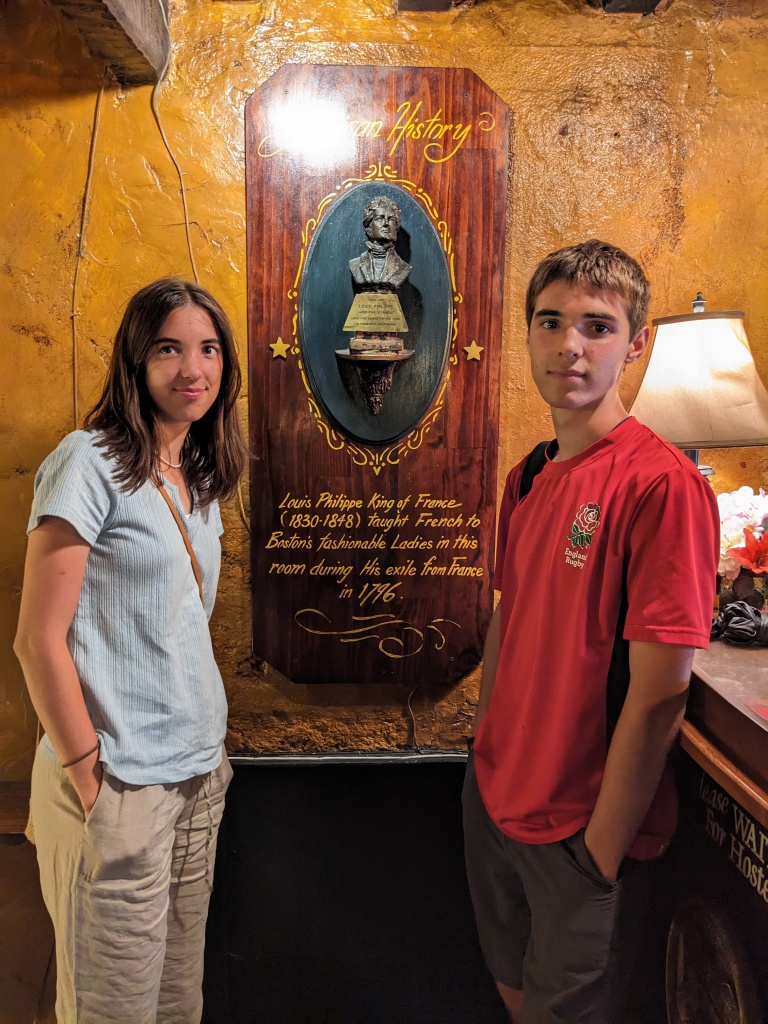
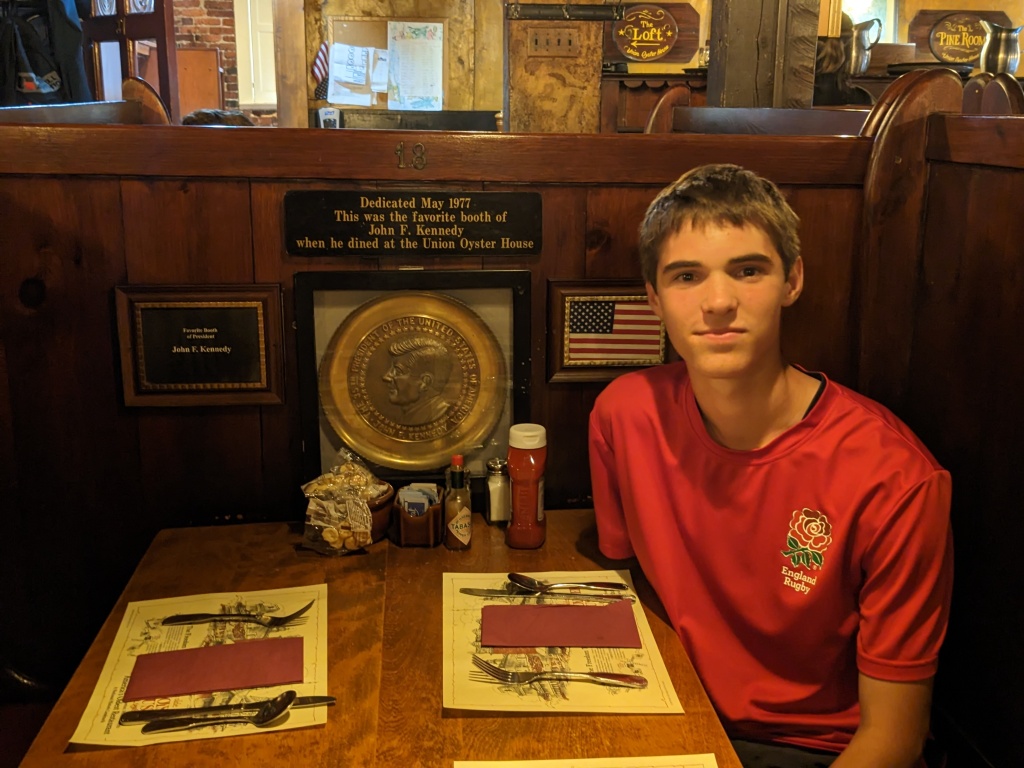
The Kennedy Clan has patronized the Union Oyster House for years. J.F.K. loved to feast in privacy in the upstairs dining room. His favorite booth “The Kennedy Booth” has since been dedicated in his memory.
Omni Parker House
Omni Parker House is the oldest of Boston’s elegant inns and the longest continuously operating hotel in the United States, built in 1855. Writers like Emerson, Thoreau, Hawthorne, and Longfellow— regularly met for conversation in the legendary Saturday Club. It was here where baseball greats like Babe Ruth, Ted Williams, and David Ortiz wined, dined, and unwound. And it was here, too, where generations of local and national politicians—including Ulysses S. Grant, Franklin Delano Roosevelt, John F. Kennedy, Colin Powell, “Tip” O’Neill, and Bill Clinton —assembled for private meetings, press conferences, and power breakfasts.
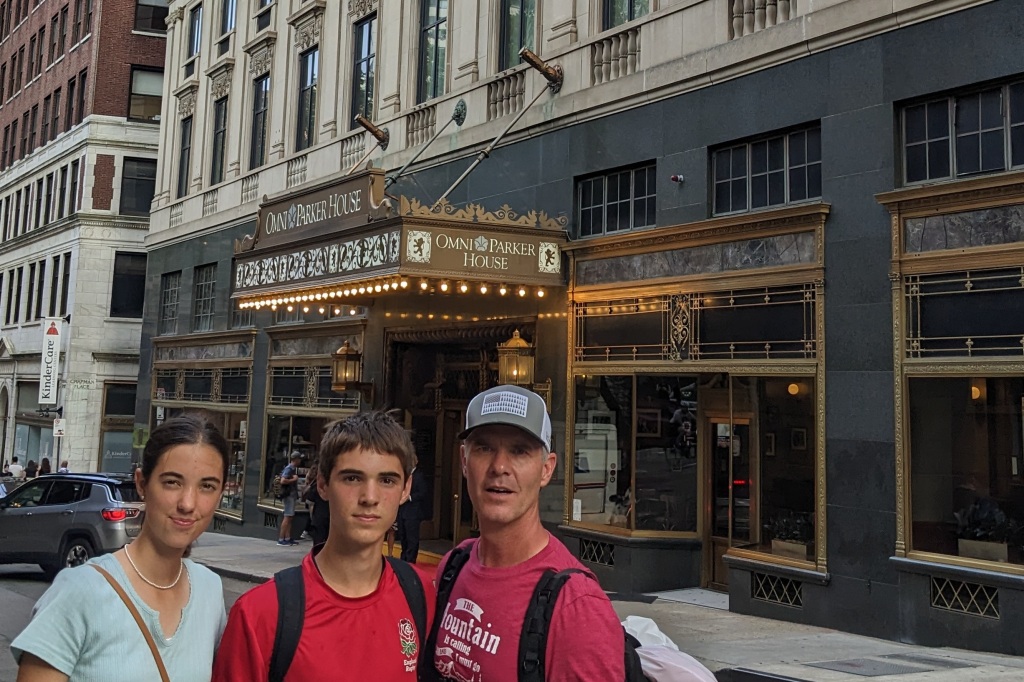
With its close proximity to Boston’s Theater District, the Omni Parker House also played an important role for performers, John Wilkes, Joan Crawford, Judy Garland, James Dean.
Omni’s Notorious Guest – On April 5 and 6, 1865, John Wilkes was registered at the Parker House, and was seen eating in its restaurant. It’s possible that he went to visit brother Edwin, who was playing a successful three-week engagement at the 3,000-seat Boston Theatre. It was reported in the Boston Evening Transcript of April 15, that he was indeed practicing his aim: “[A man named] Borland…saw Booth at Edwards’ shooting gallery [near Parker’s], where Booth practiced pistol firing in various difficult ways such as between his legs, over his shoulder and under his arms.” Eight days after leaving Boston, on April 14, 1865, John Wilkes Booth assassinated President Lincoln at Ford’s Theatre, in Washington, D.C.
Cheers
The inspiration for the setting of the hit television series Cheers can be found in Boston, walking distance from Boston Commons. Having grown up hearing the theme to Cheers “Where everybody knows your name” when my parents were watching tv, we had to stop and take a photo.
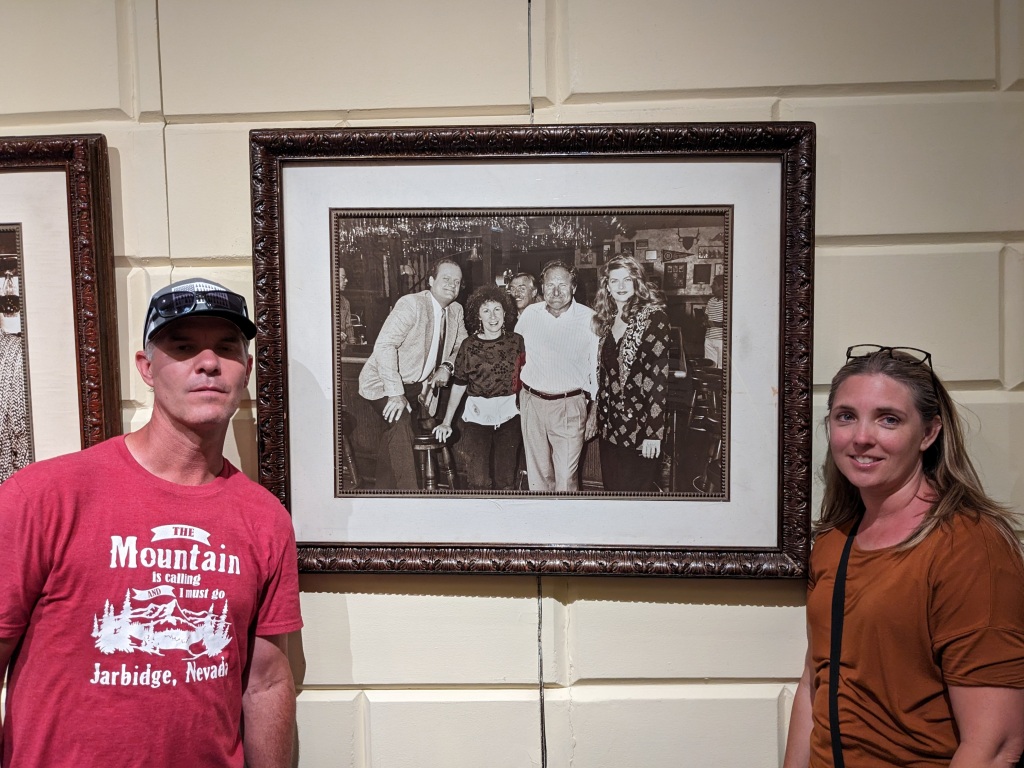
Boston Observation Deck on top of the Prudential Center
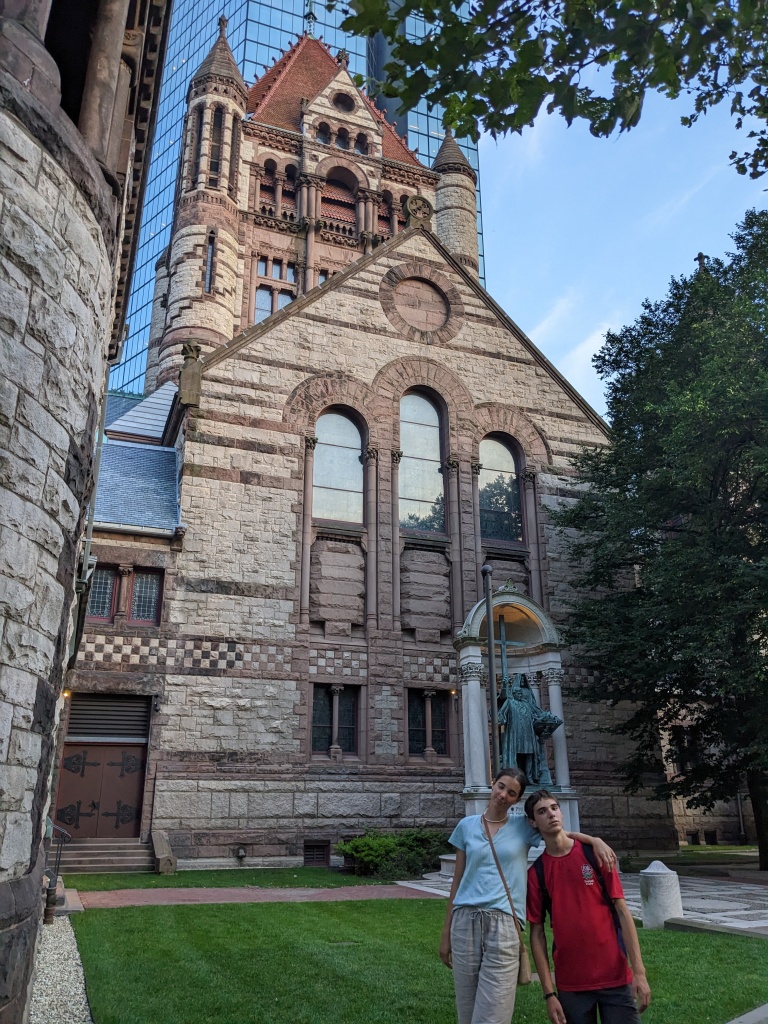
An example of something we would never have paid for but ended up being fun…was the Boston Observation Deck. One of the problems when you are touristing in Boston is most tourist attractions open at 10 am and close at 5 or 6pm, and now we have the rest of the evening to do other things. Most things on the Go Boston Pass also end at those times. But here were a couple that didn’t, and this was one of them, so we decided to try it out. We hadn’t quite figured out the buses/trams yet, so we decided to walk. We walked a ton today, I think we passed 30,000 steps before the day was over. On the way there, we passed a church that was so beautiful Ben and I stopped to take photos. You can barely tell, but it really stood out next to the skyscrapers built around it. The Trinity Church in Boston is considered a National Historic Landmark.
One of the Rectors of this church was Phillips Brooks. He wrote the Christmas carol, ‘O Little Town of Bethlehem.’ Some of the builders of the church were Phillips Brooks and Robert Treat Paine (a signer of the Declaration of Independence). I would LOVE to have toured inside, but it was closed for the evening.
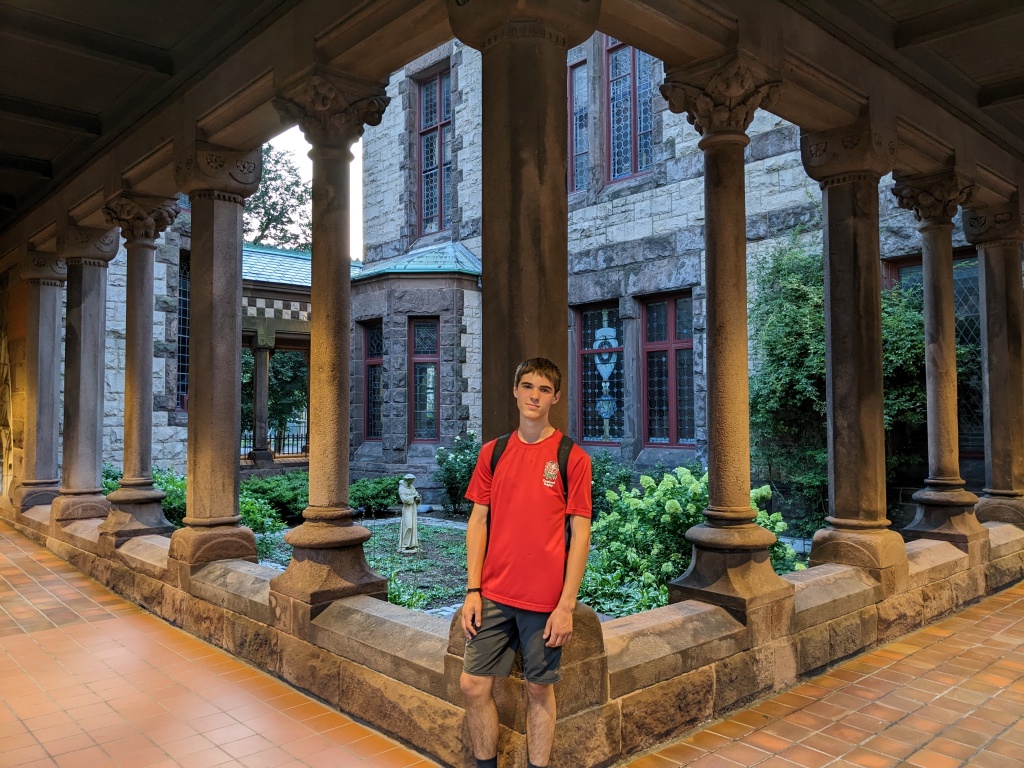
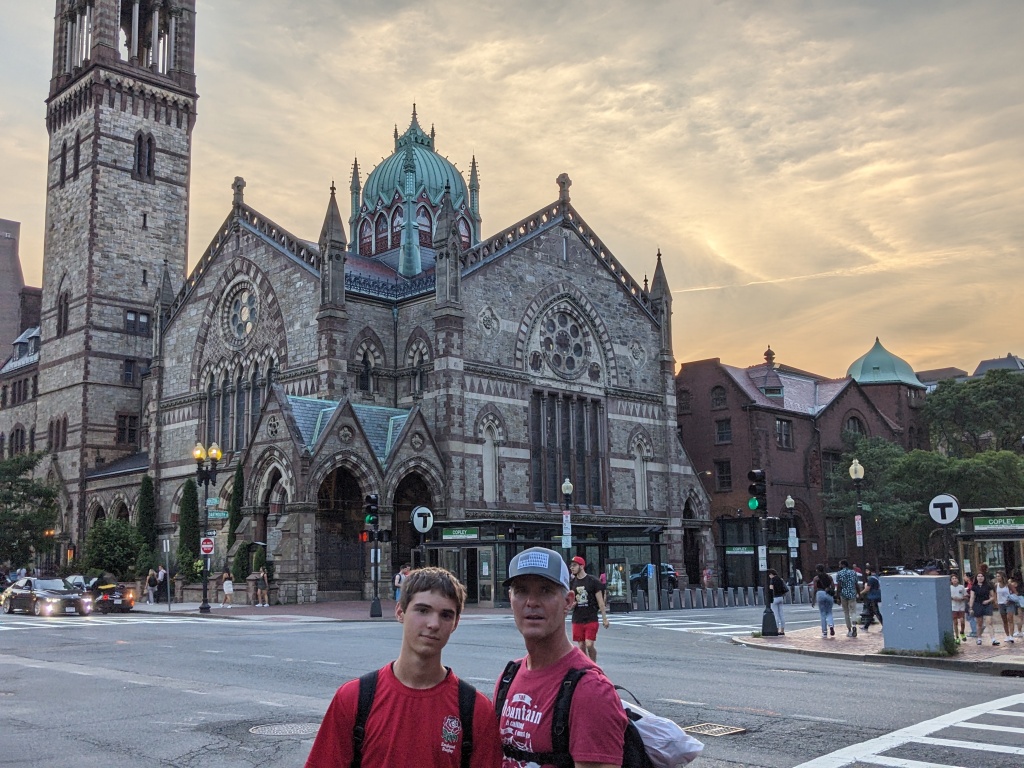
Across the street was another beautiful church. But of course, it was closed also. The Old South Church was started in 1669. Some famous people who attended this church. Mary Chilton, the first woman to step ashore at Plymouth. Benjamin Franklin was baptized as a baby here. Samuel Adams hosted meetings of the Boston Tea Party here. William Daws who rode with Paul Revere.
We eventually made it to the Prudential Tower. From the 52nd floor you can see wonderful panoramic views of the city. On the 51st floor there is an open air deck. And I believe it’s the 50th floor they had 3D models of the city with projection-mapping to show Boston in different seasons and celebrations. We spent most of our time on the 52nd floor because we didn’t know about the other two floors until we started to leave. Again, this was a Go City Pass event. We never would have done it otherwise, but it turned out to be pretty cool. If I did it again, I would suggest, bring a dinner and sit up there and eat or come long enough to just relax and enjoy the view.
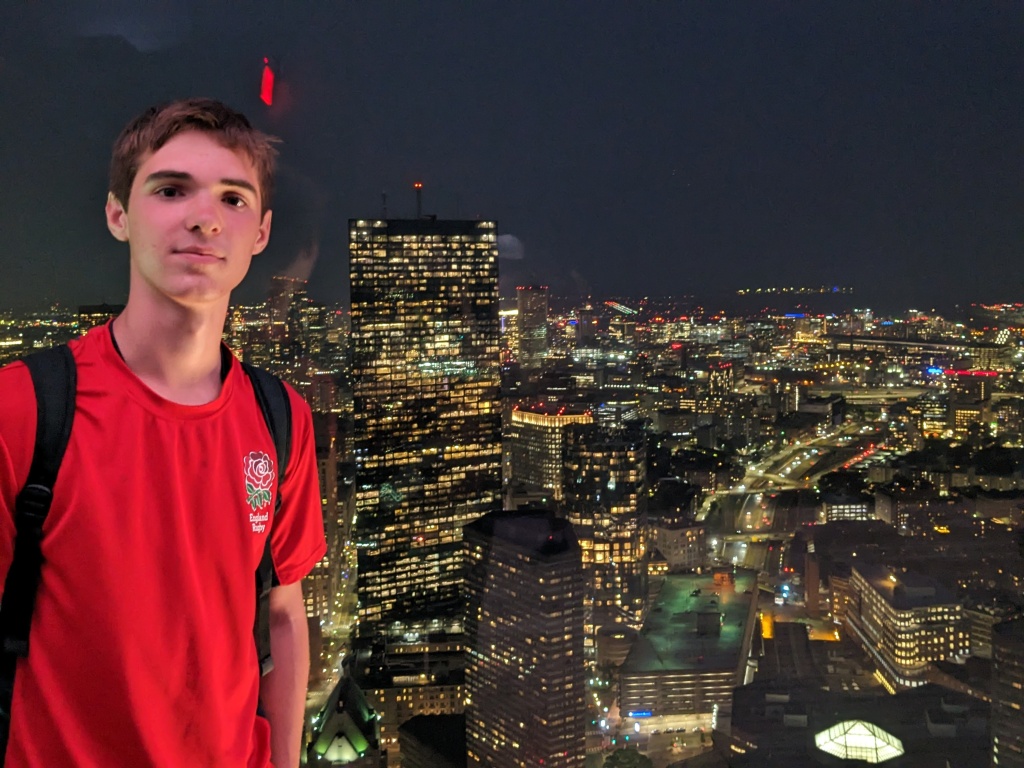
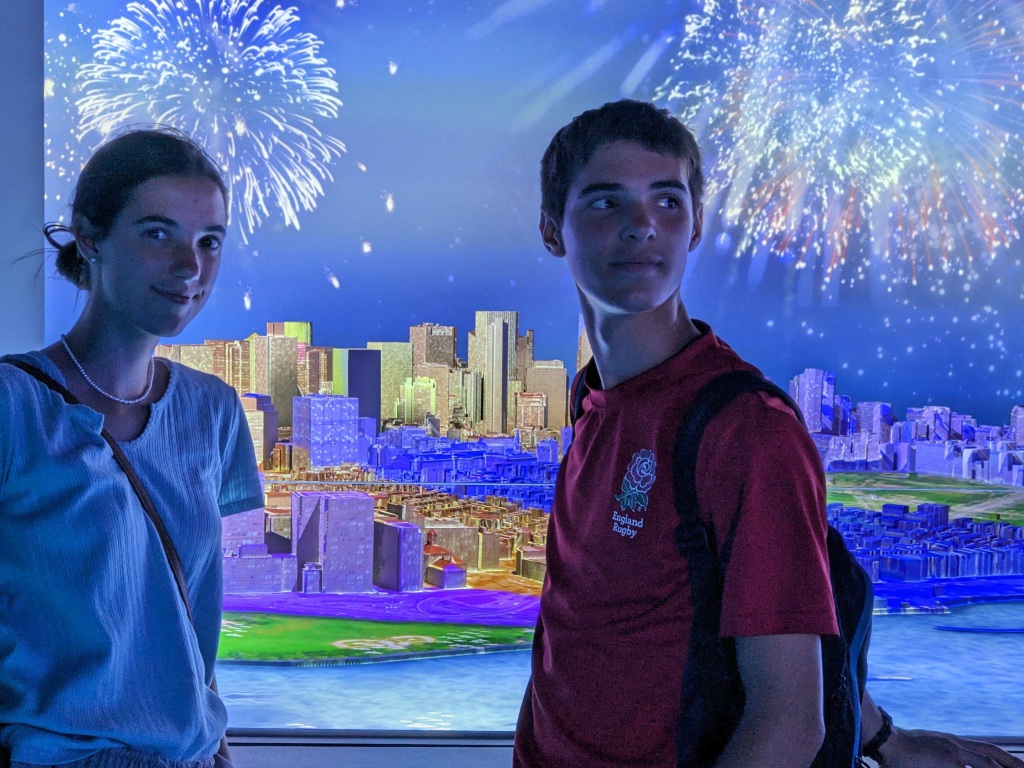
photos of the 3D model with projection-mapping. The same model kept changing scenes
This day was packed to the brim. But it was amazing see the sites in Boston. The next day will be Concord and Lexington.
